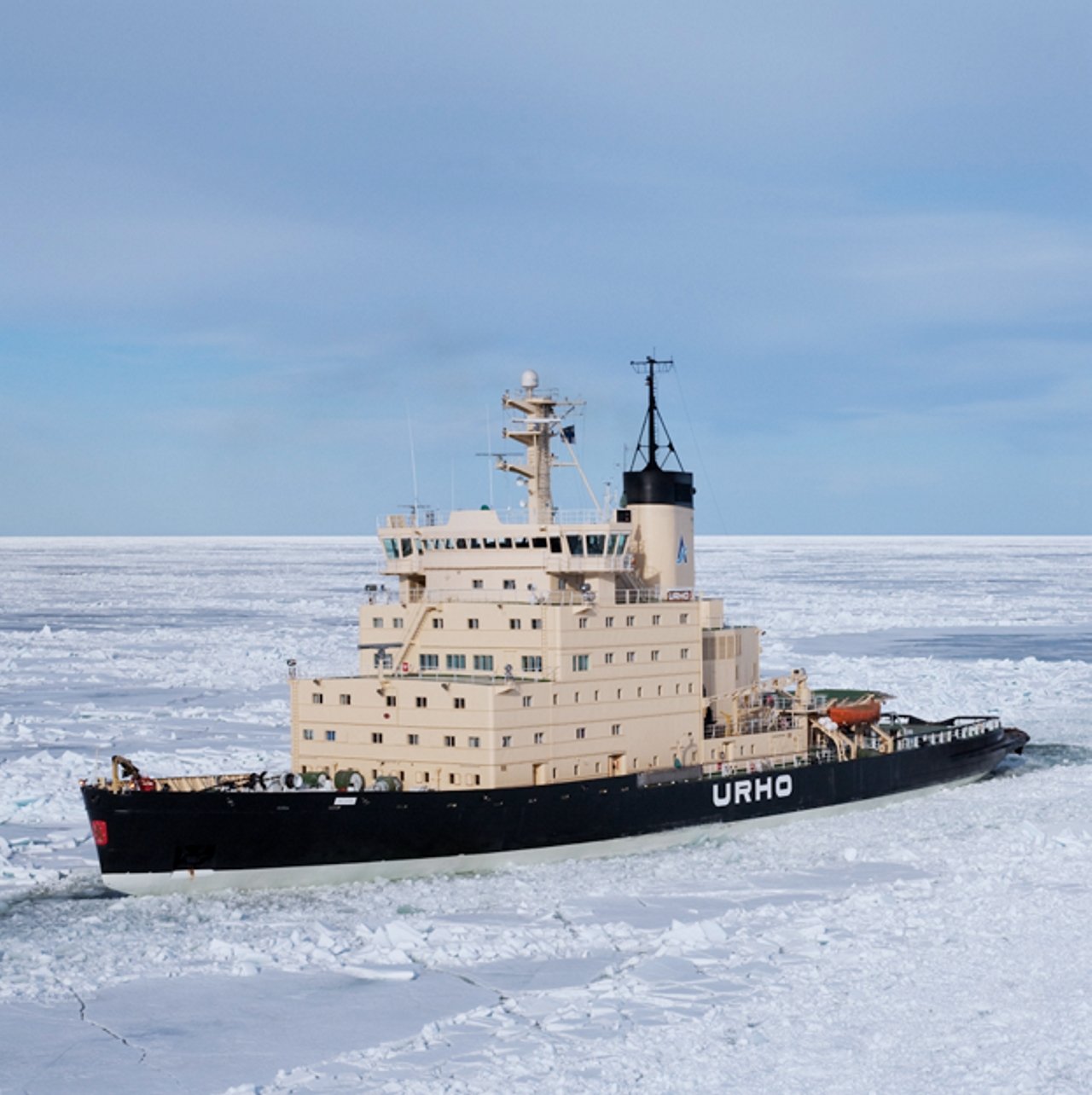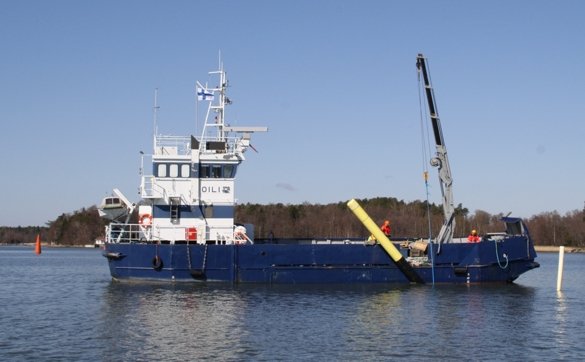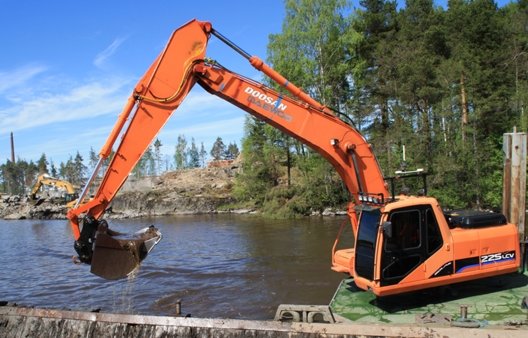
Ice breakers
IB Urho
| Built | 1975 |
| Shipyard | Wärtsilä Helsingin telakka |
| Ice class | 1A Super |
| Length | 104,6 m |
| Beam | 23,8 m |
| Operational draught | 8,3 m |
| Displacement | 9 660 t |
| GT | 7 525 t |
| NT | 2 258 t |
| Main engines | Wärtsilä-Pielstick 12PC2-5V-400 |
| Propulsion power | 16,2 MW |
| Speed | 18 knots |
| Bollard pull | 113 t |
| Crew | 21 |
| Call Sign | OHMS |
IB Urho
In a name-giving ceremony held on 5 March 1975, President of Finland Urho Kekkonen named Finland’s largest and most powerful icebreaker built to that date “Urho”, his namesake. This was a watershed event in Finnish winter navigation: since the Urho was commissioned, all of Finland’s 23 winter ports have remained open for year-round navigation.
This big and powerful workhorse was a result of innovative thinking. For the first time in the world, a scale model was used in ice trials to help the design process. A test pool built in Vallila in Helsinki and funded by Exxon was used to simulate an icebreaker’s passage through even ice fields and pack ice.
The Urho’s displacement is 60 per cent greater than that of its predecessors, but it only has two-thirds of their ice resistance. Furthermore, in response to the growing average size of ships navigating in the Baltic Sea, the Urho was built wider than its predecessors. Another novelty at the time of the Urho’s christening was a bridge with 360-degree visibility, which makes it easier to maintain visual contact with ships being towed.
The Urho’s fore thrusters rotate inwards and push water underneath the hull when the ship is sailing ahead. Water flowing along the vessel’s sides helps to reduce friction between the ship’s hull and ice. The rear thrusters rotate outwards, causing the crushed ice to be thrust under the unbroken ice sheet and allowing the broken channel to remain open. The ship is also equipped with a heeling mechanism for difficult ice conditions. When the system is in operation, three pumps transfer water inside the hull and are capable of heeling the Urho by 13 degrees in 50 seconds.
The Urho has four sister ships: the Finnish Sisu and the Atle, Ymer and Frej, which sail under the Swedish flag.
One of the design principles guiding the Urho’s construction was its planned role as a PR ship for senior government executives. To this end, the vessel features two saunas, a swimming pool, a gym and a library. Foreign heads of state and high-level delegations have been entertained in the Urho’s lounge. The interior of the ship is decorated with paintings by renowned Finnish artists.
For extra comfort, the guest and crew quarters are located above deck, separated from the engine compartment, and not below the deck as on traditional icebreakers. This arrangement muffles the noises of the engine and the ice.
Arctia continues a 130-year-old icebreaking tradition
Arctia continues a 130-year-old icebreaking tradition by deploying one of the strongest icebreaker fleets in the world. The fleet includes five traditional icebreakers: the Voima, Urho, Sisu, Otso and Kontio.
Arctia’s icebreakers are able to maintain their ice-breaking capability under all ice conditions in the Baltic Sea. The ships are equipped with towing forks and winches.
Follow the icebreaker Urho on Instagram




